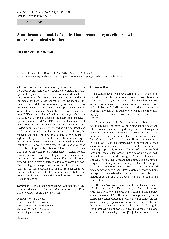摘要
A bone cell population dynamics model for cortical bone remodeling under mechanical stimulus is developed in this paper. The external experiments extracted from the literature which have not been used in the creation of the model are used to test the validity of the model. Not only can the model compare reasonably well with these experimental results such as the increase percentage of final values of bone mineral content (BMC) and bone fracture energy (BFE) among different loading schemes (which proves the validity of the model), but also predict the realtime development pattern of BMC and BFE, as well as the dynamics of osteoblasts (OBA), osteoclasts (OCA), nitric oxide (NO) and prostaglandin E-2 (PGE(2)) for each loading scheme, which can hardly be monitored through experiment. In conclusion, the model is the first of its kind that is able to provide an insight into the quantitative mechanism of bone remodeling at cellular level by which bone cells are activated by mechanical stimulus in order to start resorption/formation of bone mass. More importantly, this model has laid a solid foundation based on which future work such as systemic control theory analysis of bone remodeling under mechanical stimulus can be investigated. The to-be identified control mechanism will help to develop effective drugs and combined nonpharmacological therapies to combat bone loss pathologies. Also this deeper understanding of how mechanical forces quantitatively interact with skeletal tissue is essential for the generation of bone tissue for tissue replacement purposes in tissue engineering.
- 出版日期2012-12
